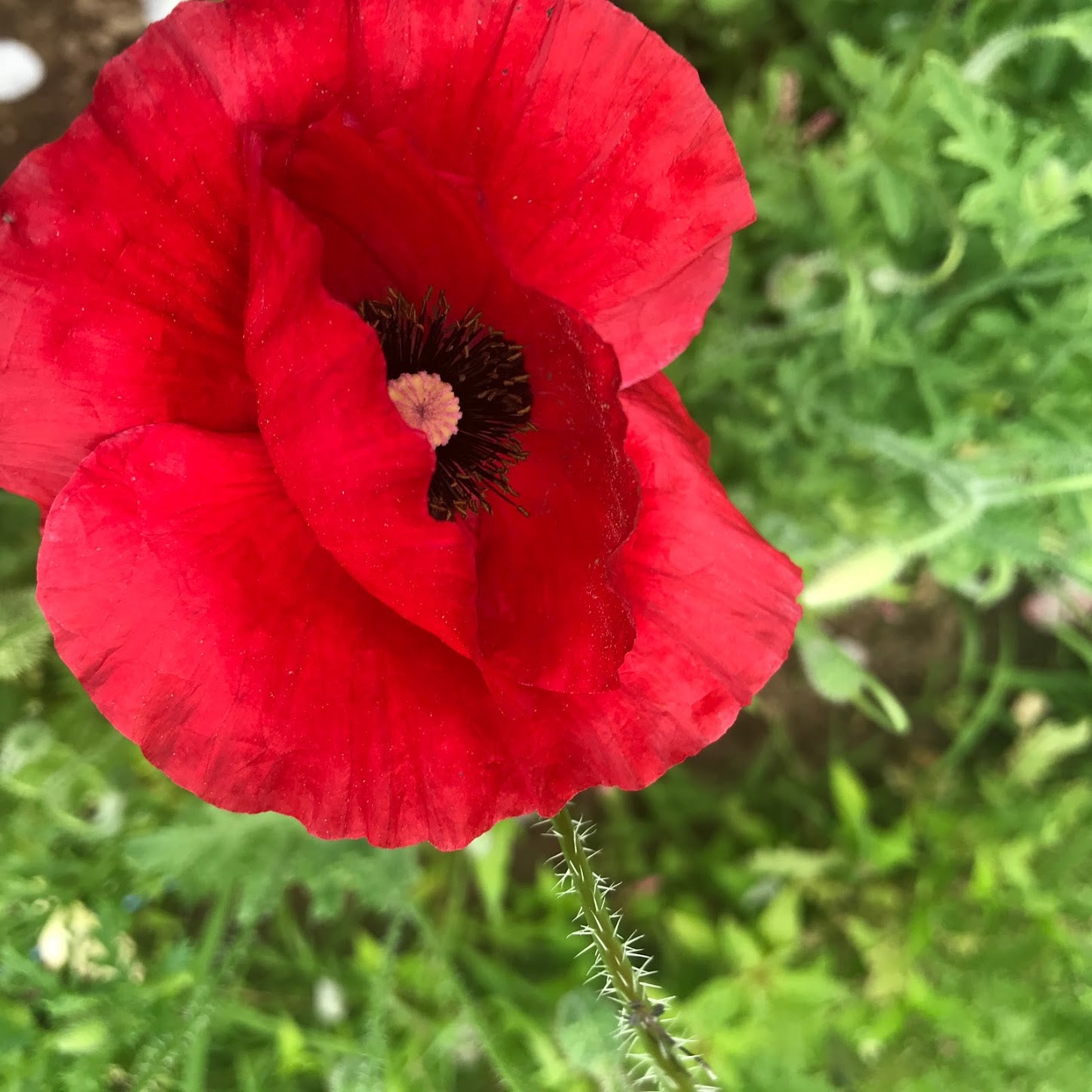How to GrowPoppies from Seed
How to Grow Poppies from Seed
Poppies (Papaveraceae) are stunningly beautiful herbaceous annual, biennial, and perennial plants. The flowers are showy, with usually four crêpe-like, crinkled petals surrounding a central stigma and pistil. Within the span of a day, having done the work of attracting pollinators, many poppies will drop their brightly-hued petals, leaving behind an attractive pod that quickly swells with ripening seeds. The seed pods can be left to develop or can be cut in order to promote more flower production. Most poppies will send up several rounds of flowers even without deadheading. The rich pollen (too heavy to cause allergies in humans) also supplies honeybees with an important energy source.
Some of the most popular annual poppies to grow from seed are breadseed or opium poppies (Papaver Somniferum), corn poppy or (Papaver Rhoeas), peony poppies (Papaver paeoniflorum), and California poppies (Eschscholzia californica). All of these seed varieties require cold-stratification and, because the sensitive seedlings do not transplant well, are best sown directly in the garden. Sowing from fall to very early spring allows the cold, wet weather to gradually break down the hard seed coat in time for the growing season. Poppy seeds should be sown on top of soil, not buried, since light is an additional requirement for germination.



Of the species Papaver somniferum, we carry a Breadseed Poppy Mix which includes Elka, Ziar Breadseed, and Black Beauty varieties. Expect showy-but-ephemeral flowers in mostly pastel hues from this mix. Especially showy are the peony poppies, produce decadent double blossoms of densely ruffled, exquisitely fringed petals resembling silky pompoms. We carry Scarlet Peony Poppy which grows on 2-3' tall plants and produces 5" bursts of bloom. Antique Flemish Poppy has double blooms reminiscent of carnations with petals of mottled pink, red, and white. You can use the seeds for baking just as you would for regular breadseed poppies.
Grow somniferums (also known as breadseed poppies) if you want to add a sculptural element to your landscape with big, beautiful seed pods that sway in the wind. Once ripe, the abundant, nutritious seeds can be used for baking and other culinary delights. Somniferum is the species valued for its milky latex which is used to create medicines like morphine (listed as an "essential medicine" by the World Health Organization).
SHOP POPPIES
Corn poppy is a wonderful, old fashioned favorite best known for its vibrant, blood-red petals and black centers. Used as an emblem for Remembrance Day or Veterans Day, red corn poppies were initially promoted by French lecturer and humanitarian Madame E. Guérin who sold paper versions to raise money for widows and orphans following World War I. The widows and orphans would craft the paper poppies which were sold and displayed to honor veterans and fallen soldiers. The tradition was eventually adopted by many other European countries, as well as Canada and the United States. These are the same poppies that are said to have notably sprung up on shelled fields to bloom over soldiers graves, inspiring the famous poem “In Flanders Fields” by Canadian physician and veteran John McCrae.
But not all corn poppies are red and black; careful seed saving has produced strains in a variety of colors from yellow to speckled pink. Our Mother of Pearl Poppy was conceived by the artist and plantsman Sir Cedric Morris who carefully selected out seeds from the odd white, pink, or lavender bloom and saved these, eventually ending up with a seashell palette of petals in luminescent, painterly washes of white, pink, maroon, and red. Our Shirley Single Poppy Mix flowers in pink, red, and white. Like most annual poppies, corn poppies readily self-sow and are perfect for rock gardens and wild spaces in your garden.
Growing Poppies From Seed
If you think you would like to see poppies blooming in your garden next year, now is a good time to pick a spot in your garden to sow some seeds. All you need is some bare soil with good drainage located in full to part sun. Poppies are not picky and do not need extra amendments to do well. The seed is very tiny, so some people combine it with sand to make dispersion more even, but you can also carefully sprinkle the seeds–taking care not to overcrowd them in one spot. Do not mulch, since light is essential for germination. Sow poppies from fall to very early spring (several weeks ahead of your last frost).
In mid- to late-spring some very tiny seedlings will emerge (be patient). Poppy seedlings will have a blue-green tinge to their foliage in contrast to any young weeds nearby. Thin seedlings to allow the plants enough room to mature (see “Growing Instructions” listed under specific varieties). As the weather warms, your poppies will grow by leaps and bounds, blooming in late spring and early summer. It is easy to save the seed and you can even follow the lead of Sir Cedric Morris and develop your own mix by selecting out seeds from unusual blooms.


